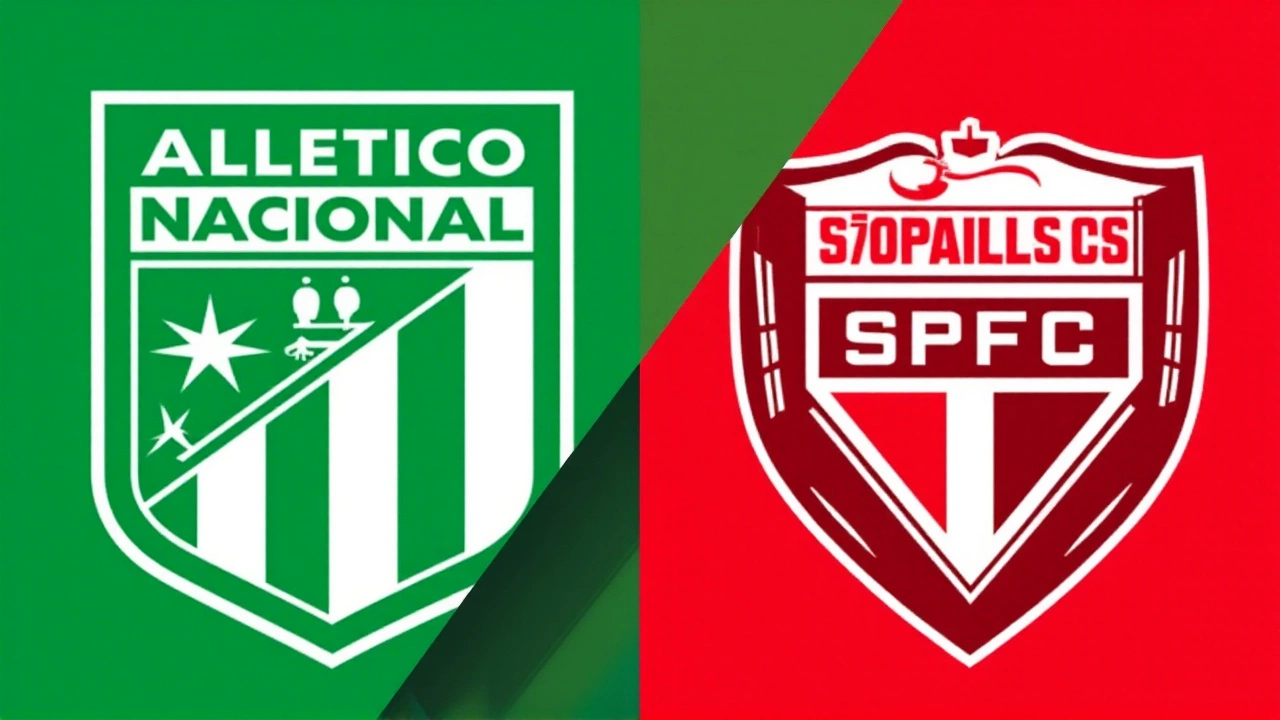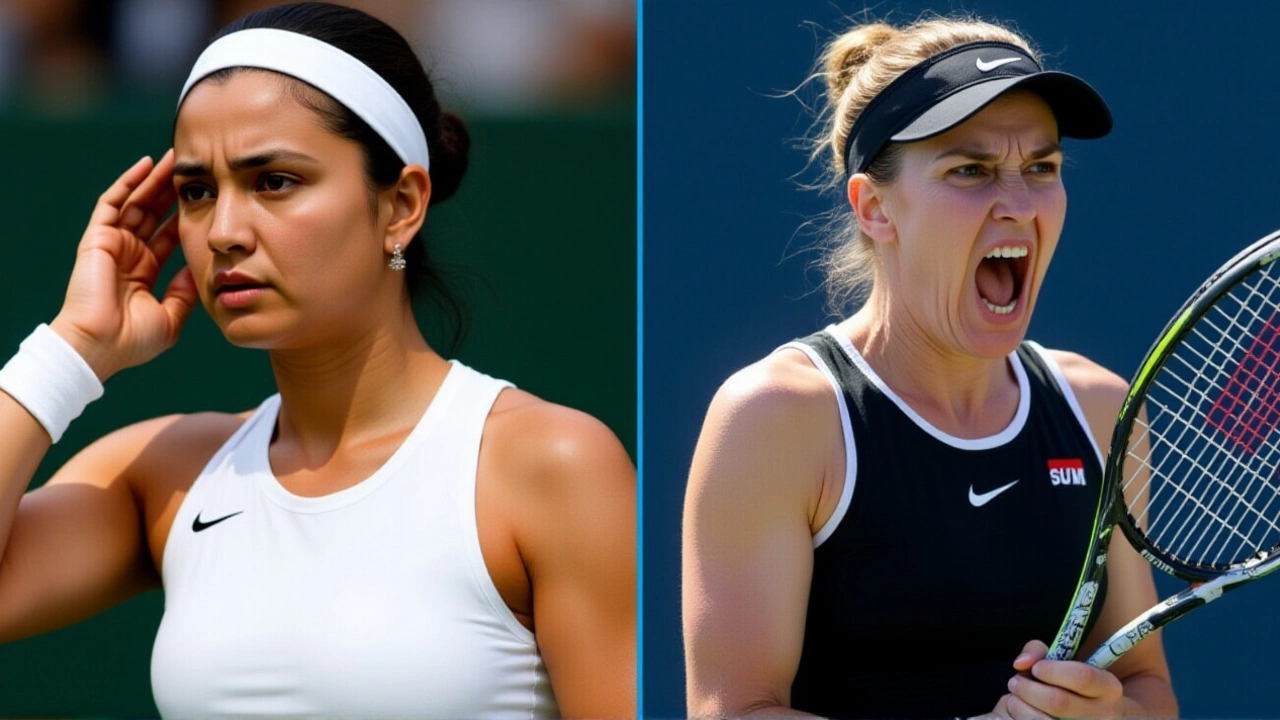When Beatriz Haddad Maia, Brazil’s No. 1 and world No. 21, walked into the press hall on September 5, 2025, the buzz was unmistakable: she’s the top seed at the São Paulo Open, and the whole nation is hoping she’ll bring the trophy home.
The tournament kicks off on September 8 and runs through September 14 at the indoor hard‑court complex in São Paulo, Brazil. Organized under the Women’s Tennis Association (WTA) banner, the event offers $275,094 in total prize money and 250 ranking points for the champion. Here’s why this week matters for everyone from local fans to players plotting their next move on the tour.
What Makes This Year’s São Paulo OpenSão Paulo Unique?
First off, the venue has been upgraded with a state‑of‑the‑art LED scoreboard and a new player lounge that mimics a beachside cabana – a nod to the city’s coastal vibe. The courts play slightly faster than the European hard surfaces, rewarding aggressive baseliners, which is exactly Haddad Maia’s style.
But the real differentiator is the depth of the field. Besides the home favorite, the draw features a mix of seasoned tour veterans and rising talents, many of whom are chasing their first WTA title. The international flavor adds a layer of unpredictability rarely seen in South American events, which traditionally see a handful of top‑seeded locals dominate.
Seedings and Notable Entrants
The 32‑player singles main draw lists eight seeds. The second seed is Hailey Baptiste of the United States, ranked 51, while the third seed is Alexandra Eala from the Philippines, sitting at 68. Mexican standout Renata Zarazua lands the fourth seed at 70.
Other seeds include Argentina’s Solana Sierra (5), Great Britain’s Francesca Jones (6), Australia’s Ajla Tomljanovic (7) and France’s Leolia Jeanjean (8). The wildcard list reads like a love letter to Brazilian tennis: Laura Pigossi, Luiza Fullana and Ana Candiotto all received direct entries.
Protected‑ranking slots are occupied by Turkey’s Berfu Cengiz and Russia’s Vitalia Diatchenko, underscoring the tournament’s inclusive approach.
Early Rounds and Surprising Results
Day one saw a few eye‑catchers. American Elizabeth Mandlik dispatched Brazil’s own Laura Pigossi in straight sets, 6‑3, 6‑0, a result that sent murmurs through the stands. Meanwhile, Cengiz breezed past Argentina’s Jazmín Ortenzi 6‑1, 6‑2, signalling she’s not here just to fill a slot.
The opening match for the top seed will be an unexpected twist: Haddad Maia faces Italy’s qualifier Miriana Tona. While Tona’s ranking hovers around 350, she’s known for her relentless court coverage, and the local crowd will be split between cheering their champion and appreciating an underdog’s fight.
On the other side of the net, third‑seed Eala will take on Hungary’s Panna Udvardy, a battle many pundits are already labeling a ‘future‑star test’ for the Philippines prodigy.

Brazilian Hopes and Home Crowd Energy
For Brazilian tennis, this tournament is more than points – it’s about inspiration. Haddad Maia’s rise to world No. 21 has grown the sport’s profile back home, and a win here would be the first WTA title she’s claimed on Brazilian soil. Local coach Pedro Melo told reporters, “The fans feed the players’ adrenaline. When you hear the chant of ‘Vai, Brasil!’ it’s like an extra serve in your pocket.”
Yet not everyone is counting on a home victory. Wildcard entrant Fullana, a former junior champion, mentioned in a post‑match interview, “I’m here to gain experience, not to win. If I can push a seed to three sets, that’s a win for me.”
That sentiment reflects a broader narrative: the event is a launchpad for younger talents while offering veterans a chance to fine‑tune their games before the Asian swing later in the season.
What’s at Stake? Prize Money and Ranking Points
According to the WTA’s standard breakdown, the champion walks away with $36,300 and 250 points – a sweet boost for anyone looking to break into the top‑15. The runner‑up earns $21,484 and 163 points, while semifinalists collect $11,970 and 98 points each. Quarterfinalists see $6,820 and 54 points, round‑of‑16 players $4,470 and 30 points, and first‑round losers still pocket $3,110 and a solitary point.
Those numbers matter more than they look. For a player like Eala, a deep run could shift her ranking from 68 into the top 50, opening doors to direct entries at premier events without needing to qualify.
Looking Ahead: How the Tournament Could Shape the Rest of the Season
With the hard‑court season winding down, the São Paulo Open serves as a critical checkpoint before the Asian tour’s indoor events begin in late October. A strong performance here often translates into momentum on the faster courts of Tokyo and Beijing.
Analyst Laura Stevens of Tennis Insight notes, “Players who finish the South American swing with a title or a final usually carry that confidence into the WTA 1000 tournaments. For Haddad Maia, a win would cement her status as a contender for the year‑end championships.”
Conversely, early exits could push the likes of Baptiste and Tomljanovic to recalibrate before the season’s final push. The stakes are high, the crowds are loud, and the hard courts are ready to test every slice, serve, and sprint.

Frequently Asked Questions
How does the São Paulo Open affect Brazilian players’ rankings?
Because the event awards 250 points to the champion, a strong finish can move a Brazilian player up several spots. For instance, if Beatriz Haddad Maia wins, she could jump into the top 15, securing direct entry into upcoming WTA 1000 events.
Who are the biggest dark horses in this year’s draw?
Berfu Cengiz, returning with a protected ranking, stunned in the first round and could ride that confidence deeper. Also, the 17‑year‑old Alexandra Eala has shown rapid improvement and may upset a higher seed before the quarterfinals.
What is the prize money distribution beyond the champion?
The runner‑up receives $21,484, semifinalists $11,970 each, quarterfinalists $6,820, round‑of‑16 players $4,470, and first‑round participants $3,110. Every player also earns at least one ranking point.
When does the next major hard‑court event follow the São Paulo Open?
After the São Paulo Open concludes on September 14, players typically head to the Asian swing, starting with the Tokyo WTA 500 in early October, followed by the Beijing WTA 1000 later that month.
Why is the hard‑court surface in São Paulo considered faster?
The court’s acrylic coating is a low‑bounce, high‑friction material that speeds up ball travel. Players with aggressive baseline games, like Haddad Maia, often gain an advantage on such surfaces.
